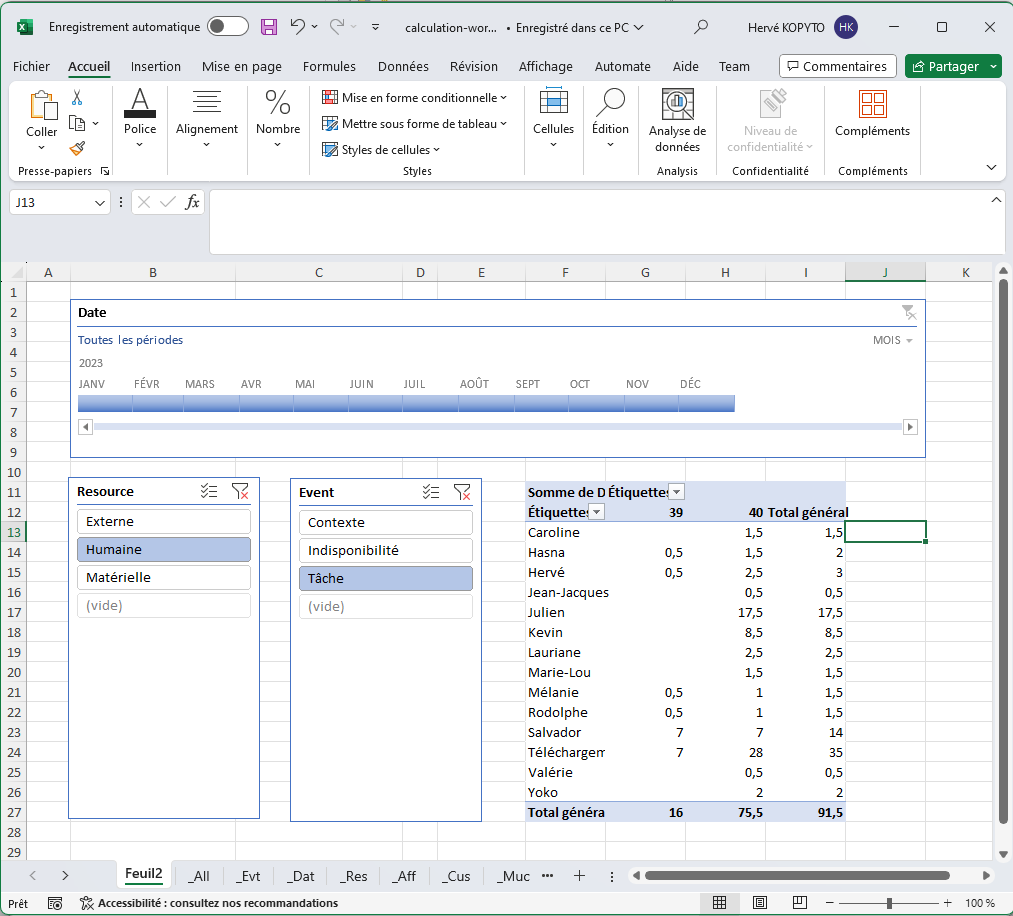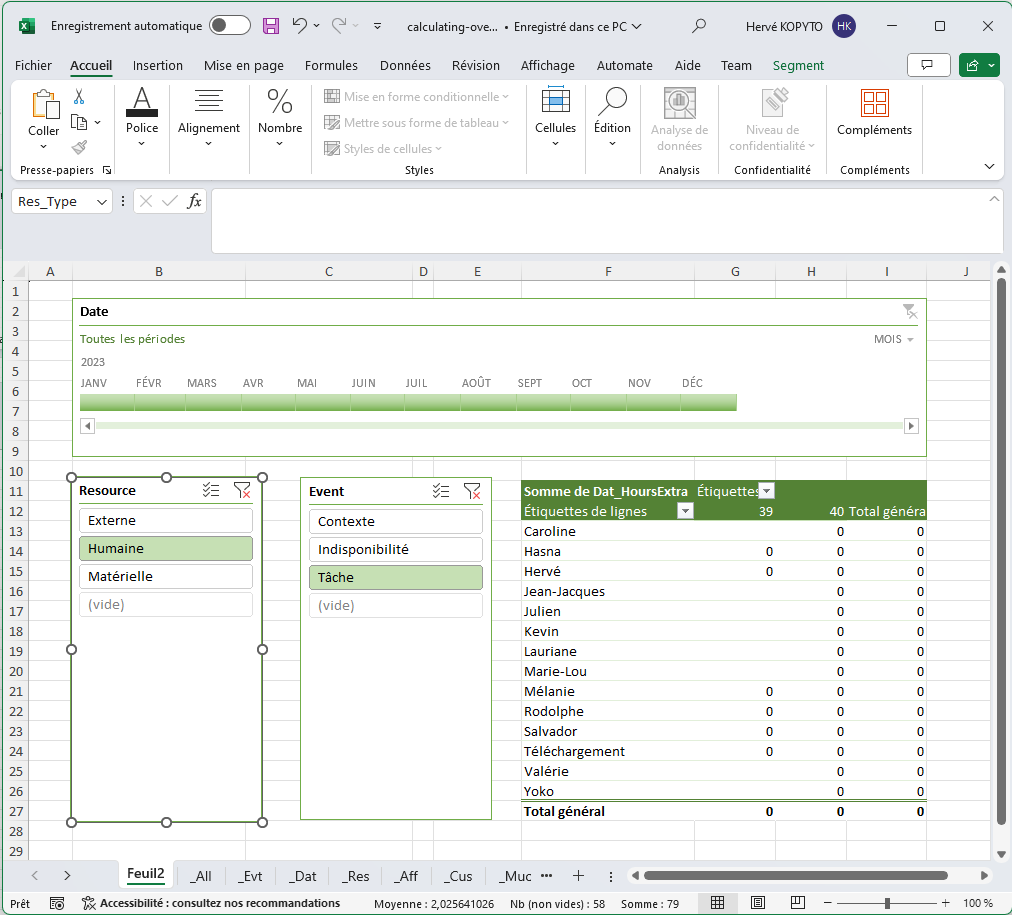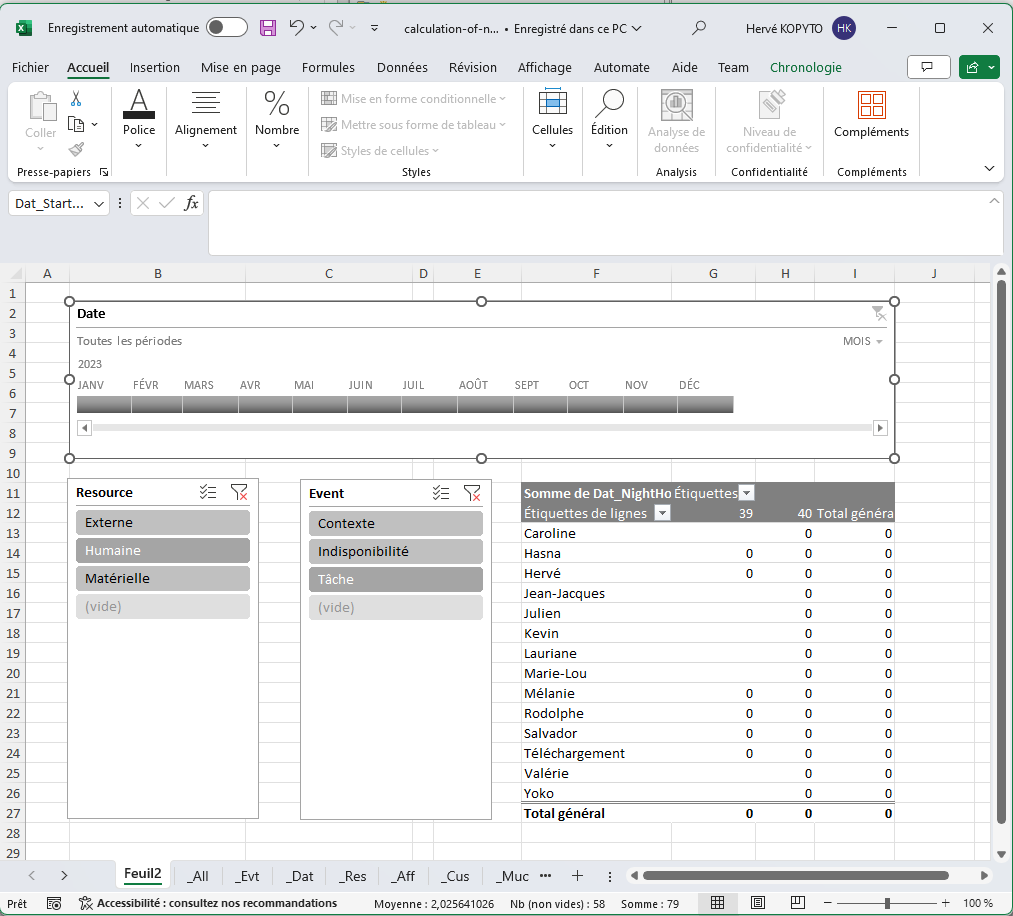Template for calculating working hours
Explore the templates for calculating working hours, their advantages and their applicability.
Download this Excel PivotTable template
Theme : HR Features- Put in table form
- Conditional formatting
- Timeline
- Segment
- Sum
- Hours : Dat_DayHours
What is a template for calculating working hours?
A working hours calculation model is a system or tool for tracking, calculating and analysing the hours worked by employees within an organisation. It can include planning working hours, monitoring actual hours worked, comparing them with planned hours, and analysing variances. These models ensure that resources are used optimally, while at the same time ensuring that operational requirements are met. These models can be simple or complex, depending on the needs of the organisation. They can be carried out manually or using specialist software such as PlanningPME or spreadsheet tools such as Excel. With Excel, for example, creating a pivot table can help to analyse hours worked data more effectively.

Advantages of a model for calculating working hours?
A model for calculating working hours is crucial to the effective management of time and resources in any organisation. It provides a structure for monitoring, analysing and managing the time spent by employees on different tasks or projects. Here are some of the key benefits of a working hours calculation model:
- Greater precision : A calculation model automates the time tracking process, reducing human error and ensuring greater accuracy in recording hours worked.
- Optimising resources : By enabling accurate analysis of the time required for various tasks and projects, these models facilitate more efficient allocation of resources, ensuring that projects are completed on time and within budget.
- Facilitating planning : With accurate data on hours worked, managers can plan future staff allocations more effectively, help establish realistic timetables for projects, and better anticipate resource requirements.
- Regulatory compliance : These templates help ensure compliance with local and international regulations on working hours, breaks and days off, which is crucial to avoiding legal penalties and maintaining a compliant and ethical working environment.
- Analysis and continuous improvement : A model for calculating working hours enables in-depth analysis of time trends, identifying areas of efficiency and potential improvement. It can help uncover bottlenecks, inefficiencies or areas where additional training may be required.
- Transparency and responsibility : It fosters a culture of transparency and accountability by providing clear data on the time spent on different tasks. This can also contribute to improved communication between teams and managers.
- Cost savings : By optimising the use of resources and improving the efficiency of processes, a model for calculating working hours can contribute to significant cost savings over the long term.
- Simplified payroll management : For organisations that pay employees on an hourly basis, an accurate hours calculation model simplifies payroll management and ensures that employees are paid correctly for their time.
Using tools such as PlanningPME and Excel, with features such as pivot tables, can considerably simplify the implementation and management of a working hours calculation model, making the process smoother and less error-prone.
Who can use a template to calculate working hours?
Virtually any type of organisation can benefit from the use of a working hours calculation model. Whether in small businesses, large corporations, educational institutions or governments, effective time management is crucial to achieving objectives. Project managers, human resources managers and operational leaders will find these models particularly useful for managing working hours, planning projects and analysing performance.



